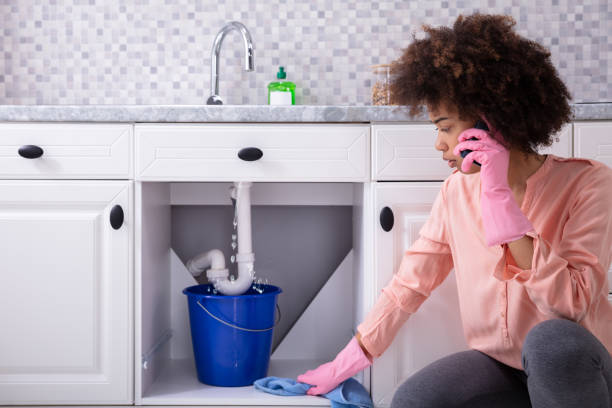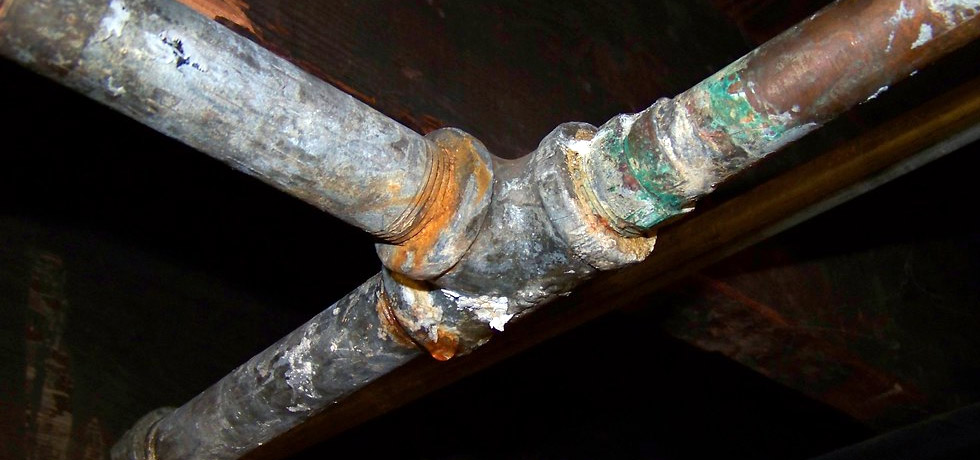Everybody is bound to have his or her own assumption in relation to Common Plumbing Challenges In Old Buildings.

Older homes frequently feature appeal, personality, and background, yet they can also bring a host of pipes concerns. Whether you're managing maturing pipes, low water pressure, or leakages, understanding just how to resolve these typical troubles is essential to preserving a safe and useful home. In this guide, we'll check out the typical pipes challenges encountered by older homes and offer sensible services to keep your pipes in top form.
Recognizing Common Pipes Concerns
Aging Pipes
One of the most common issues in older homes is maturing pipes. Relying on the age in which your home was constructed, the pipes could be made from products that have degraded with time, such as galvanized steel, cast iron, or perhaps lead. These materials can wear away, become breakable, or create leaks, resulting in water damages and potential carcinogen.
Low Tide Pressure
If you're experiencing low water stress, maybe due to natural resources, corrosion inside the pipes, or old components that are no more operating efficiently. This can be a major aggravation, especially in areas like showers and sinks.
Dripping Pipelines
Leakages are another constant problem in older homes, often brought on by rusty or worn-out pipes. Also tiny leakages can cause substantial water damages, mold growth, and enhanced water costs otherwise attended to immediately.
Out-of-date Fixtures
Outdated pipes components such as faucets, toilets, and showerheads not just look old however may additionally be much less effective, susceptible to leakages, or incompatible with modern plumbing requirements.
Pipeline Deterioration
Deterioration is a typical trouble in older pipes, especially those made from galvanized steel or cast iron. Corroded pipes can restrict water flow, cause discoloration, and ultimately lead to leakages or pipe bursts.
Examining the Condition of Your Plumbing
Checking Visible Pipes
Start by inspecting any visible pipes in your home, such as those in basements, crawl spaces, or under sinks. Try to find indicators of corrosion, leaks, or rust, which can show underlying issues.
Looking for Leakages
Check for leakages by examining locations around faucets, commodes, and under sinks. You can also monitor your water meter before and after a duration of no water utilize to spot hidden leaks.
Water Quality Screening
Older pipes can impact the high quality of your water. Conduct a water quality examination to look for contaminants such as lead, corrosion, or various other contaminations that might be presented by maturing pipes.
Solutions for Typical Plumbing Issues
Replacing Aging Pipes
If your home has old, wearing away pipes, think about replacing them with modern-day products like copper or PEX. This can be a considerable investment, but it will certainly protect against future issues and enhance the safety and security and integrity of your plumbing system.
Dealing With Low Water Pressure
To deal with low water pressure, beginning by cleansing or replacing old components and getting rid of mineral build-up in the pipelines. If the trouble persists, it may be required to replace areas of rusty pipelines.
Fixing and Replacing Leaking Pipes
For tiny leaks, you can utilize pipe clamps or epoxy putty as a short-lived solution. Nevertheless, it's ideal to replace dripping pipes entirely to stay clear of further damages.
Upgrading Components
Upgrading old components to modern, water-efficient versions can improve your home's plumbing performance and decrease water usage. Search for components with the WaterSense label for the best performance.
Managing Pipe Corrosion
If your pipelines are worn away, replacing them with corrosion-resistant products like copper, PVC, or PEX is the very best remedy. Routine examinations and water top quality maintenance can assist prevent additionally corrosion.
When to Call an Expert
While some plumbing issues can be managed with DIY remedies, there are times when it's finest to employ an expert. If you're dealing with significant leaks, considerable corrosion, or are uncertain regarding the condition of your pipes, a licensed plumber can give experienced analysis and fixing.
Preventive Maintenance Tips
Routine Assessments
On a regular basis check your pipes system for indicators of wear and tear. Capturing issues early can protect against expensive fixings down the line.
Water Pressure Law
Guarantee your water stress is within the suggested array to prevent worrying your pipes and components. A plumbing professional can install a pressure regulator if needed.
Water Top Quality Maintenance
Mount water filters or softeners if your water high quality is poor. This can protect your pipelines and fixtures from damage brought on by hard water or pollutants.
Aggressive Pipe Replacement
If your home has very old pipelines, take into consideration proactive replacement prior to significant concerns emerge. This can save you from emergency fixings and water damage.
Conclusion
Handling plumbing issues in older homes requires a combination of alertness, preventive upkeep, and timely upgrades. By recognizing the common challenges and recognizing when to look for professional aid, you can guarantee your plumbing system remains practical and trustworthy for years to find.
Common Plumbing Issues in Older Homes and How to Fix Them
Owning an older home in Australia comes with its unique charm and a set of challenges, especially when it comes to plumbing. The Sunshine Coast has many older properties that can harbour plumbing problems that aren t just inconvenient but potentially costly. Here s a look at some common plumbing issues in older homes and expert advice on how to handle them.
Outdated Piping Materials
Many older homes were built with galvanised steel, cast iron, or even lead pipes, materials that are far from ideal by today s standards. Galvanised pipes are prone to corrosion and clogging, while lead pipes pose serious health risks.
How to Fix:
Replacing old pipes is a job for a professional. Upgrading to copper or PVC piping not only enhances water quality and flow but also increases the property s safety and value. If you suspect your home has outdated materials, a licensed plumber can conduct a thorough inspection and recommend the best course of action.
Corrosion and Pipe Degradation
Over time, exposure to water and minerals can cause pipes to corrode, leading to leaks, bursts, and water contamination. Corrosion is especially common in homes over 50 years old.
How to Fix:
Regular inspections can catch early signs of corrosion. If corrosion is found, the affected section of piping often needs to be replaced. For homes with extensive corrosion, a complete plumbing overhaul might be necessary. It s crucial to consult with a plumbing expert to understand the extent of the issue.
Tree Root Intrusion
Older neighbourhoods usually have mature trees whose roots can intrude into pipe lines, causing blockages or damage. This is particularly problematic for sewer lines, where roots seek out water sources.
How to Fix:
A plumber can use a specialised camera to inspect sewer lines for root intrusion. If roots are a problem, methods like root cutting or hydro-jetting can clear the obstruction. In severe cases, part of the pipe may need replacing. Consider root barriers around the piping to prevent future issues.
Inadequate Water Pressure
Low water pressure in older homes can be due to various factors, including corroded water lines, sediment build-up in pipes, or outdated fixtures.
How to Fix:
First, check if the low pressure is isolated to one area or throughout the house. Replacing old fixtures can sometimes resolve the issue. However, if the problem is more widespread, it might be due to sediment or corrosion. Flushing the system or replacing the affected pipes usually restores normal pressure. Again, a professional assessment is advisable.
Outdated Fixtures
Older homes often feature fixtures that are not only visually dated but functionally inefficient. This includes everything from toilets and taps to showerheads and washing machine hoses.
How to Fix:
Updating these fixtures can improve both water efficiency and the aesthetic appeal of your home. Modern fixtures are designed to conserve water, which can significantly reduce your water bill and lessen your environmental impact.
Conclusion
Maintaining the plumbing in an older home requires a proactive approach. Regular checks and updates are key to preserving these beautiful properties. If you re facing plumbing issues in your older home, it s best to call on experienced professionals like Green & Gold Plumbing & Gas. With the right expertise, even the most daunting plumbing problems can be resolved, ensuring that your home s character is maintained while its functionality is enhanced.
https://gandgplumbing.com.au/common-plumbing-issues-in-older-homes-and-how-to-fix-them/

We hope you enjoyed reading our piece about Common Plumbing Problems in Older Homes. Thanks for spending some time to browse our blog. Are you aware of somebody who is sincerely interested in the subject? Be sure share it. Thanks a lot for going through it.
Click Here